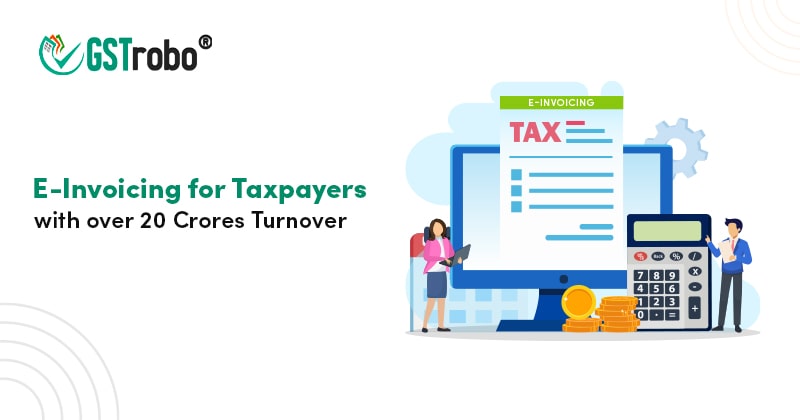E-Invoicing for Taxpayers with over 20 Crores Turnover
As per the recent notification issued in the e-Gazette of India, e-invoicing will now cover all those taxpayers whose aggregate turnover exceeds INR 20 Crores during any previous financial year.

E-Invoicing Implementation Phases
The Government of India implemented e-invoicing in a phased manner. In the first phase, taxpayers having a turnover of more than INR 500 crore were required to issue e-invoices from October 1, 2020. In the second phase, taxpayers having a turnover of more than INR 100 crore were required to issue e-invoices from January 1, 2021. In the third phase, taxpayers with a turnover of more than INR 50 crore must issue e-invoices from April 1, 2021. In the fourth phase, taxpayers with a turnover of more than INR 50 crore must issue e-invoices from April 1, 2022.
Criteria of E-Invoicing Implementation
Here are the criteria for e-invoicing implementation:
- Turnover must exceed the threshold limit of INR 20 crores during any previous financial year.
- Deals in B2B and Export Supplies (including deemed export supplies)
What Impact or Changes will E-invoicing have on Business Processes?
As the CBIC has made e-invoicing mandatory for taxpayers whose aggregate turnover exceeds the INR 20 Crores mark, they must now interface their systems with the government’s invoice registration portal to generate an IRN for every B2B invoice and export supplies in a seamless manner. The following are the impacts of e-invoices on company processes:
- Taxpayers will need to make adjustments to their GST return preparation process as B2B supplies can be auto-populated in returns, whereas B2C supplies are updated manually.
- The most difficult problem that enterprises will face is ensuring that IRNs are generated and captured constantly.
- The company must now identify transactions that may be subject to e-invoicing and categorize them for compliance.
- To include extra information for invoices such as bank credentials and payee data, businesses will need to maintain a vendor and customer master.
Penalty for Non-Generation or Erroneous Generation of E-Invoices
Non-generation of an e-invoice is an offense punishable by law.
- Penalties of up to INR 10,000 per invoice are levied.
- Erroneous invoicing might result in INR 25,000 penalty for each invoice.
If a taxpayer misses the deadline for generating an e-invoice, he or she will face penalties.
- Taxpayers’ GST returns will not be automatically filled out.
- The recipient will not pay without a proper e-invoice, since this may jeopardize his or her ability to claim ITC.
- As the data from e-invoices is auto-populated in GSTR and Part-A of the e-way bill, return and e-way bill creation would be impeded.
- Without a valid e-invoice, the vehicle may be held or seized by GST officers.
Conclusion
To comply with the latest e-invoicing mandate, taxpayers now need to update or change their current e-invoicing solution due to the consequences mentioned above. Moreover, vendors cannot be forced to wait to claim their ITC until the e-invoice is generated. Hence, for a flawless deployment of the new e-invoicing system, the notified taxpayers should use products or services provided by the GSPs.
